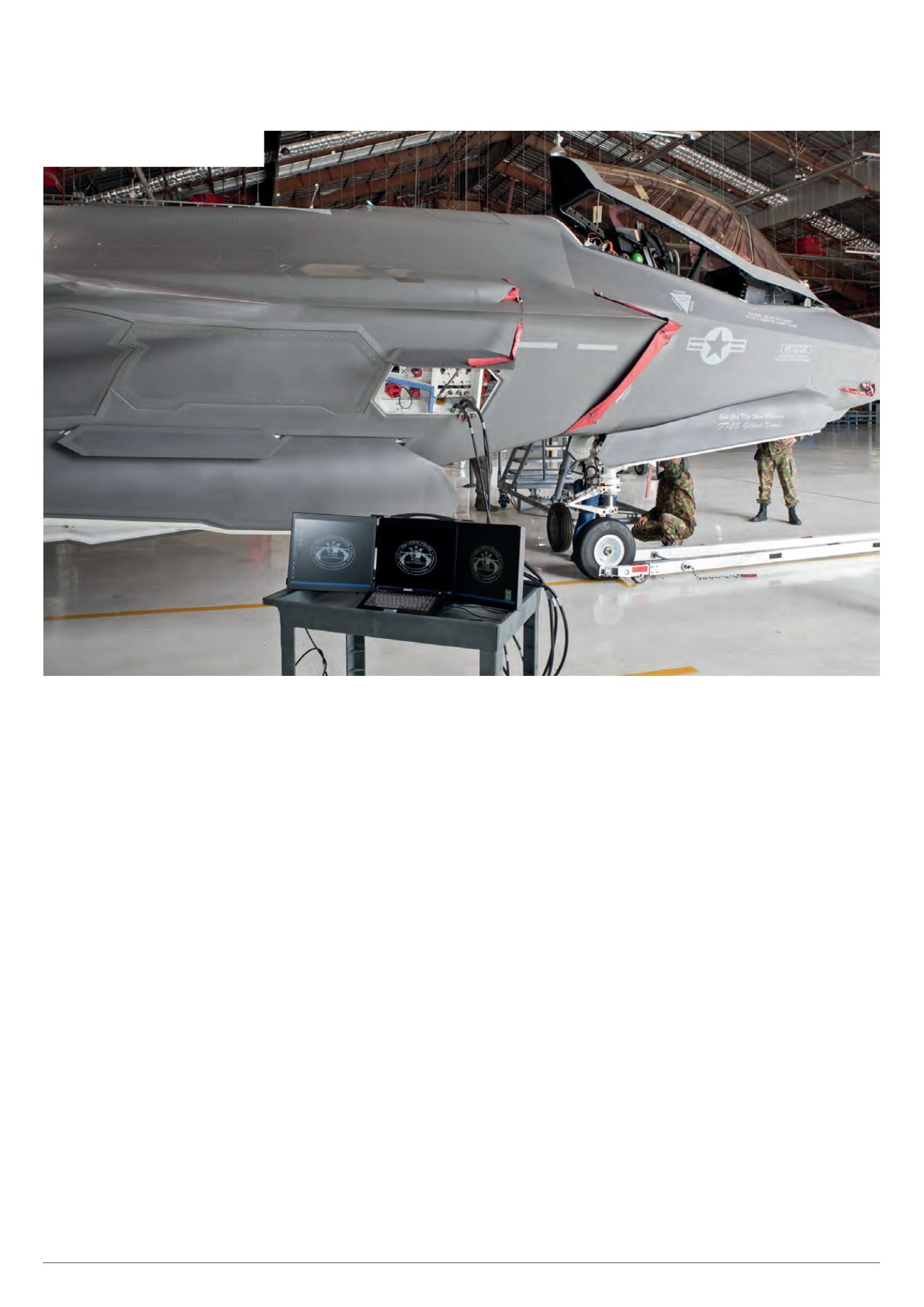

32
F
rom smartphones to multi-
screen portable systems,
ground control systems
(GCSs) are evolving
alongside the technology
of unmanned craft. As the complexity
of the control systems on the craft
themselves increases, even up to the
latest F-35 (nominally) manned fighters
for downloading systems data, so there
is a need for more sophisticated ground
control for remotely piloted systems.
Greater autonomy is also opening up
new ways of controlling the craft.
GCS evolution is tightly coupled to
the data requirements of the craft and
the demands of end-users. As gimbal
systems become more complex, they in
turn need more complex control in the
GCS, and higher data rates to collect
and analyse the video being sent back
from the craft. This potentially has to
be coordinated by the GCS, and then
delivered to the user.
As in many other areas of technology,
cloud computing is having a big impact
on GCS design, and the potential
benefits from this shift in technology are
huge. At the moment, applications such
as inspections require a qualified pilot to
go to a remote location with a UAV, set it
up and fly it, as well as control a still or
video camera as part of the inspection.
With the ground station linking to cloud
computing infrastructure though, video
can be delivered anywhere in the world.
The next step is then to allow the user
to control the camera remotely and
combine that with control of the craft. This
presents a major technology challenge
to achieve a low latency in the chain of
information transmission.
Nick Flaherty
explains how ground control system design
and technology meets the needs of unmanned applications
Firm
footings
June/July 2016 |
Unmanned Systems Technology
The ground control station for the F-35
fighter (Courtesy of Chassis Plans)









